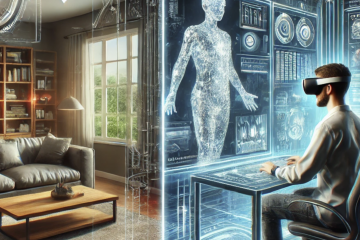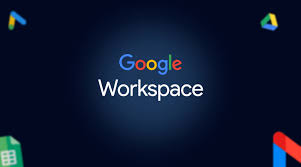As we stand in early 2025, the world of work is undergoing a profound transformation, driven by rapid technological advancements and evolving societal expectations. The integration of artificial intelligence, automation, and other cutting-edge technologies is reshaping career landscapes across industries, creating new opportunities while also presenting challenges for workers and organizations alike.
One of the most significant trends shaping the future of work is the rise of hybrid work models. The pandemic accelerated the adoption of remote work, and now hybrid arrangements have become a permanent fixture in the modern workplace. Businesses are adjusting their models to offer both in-person and remote flexibility, supporting work-life balance and employee satisfaction1. This shift requires professionals to be adept at working effectively in both physical and virtual environments, emphasizing the need for strong communication skills and proficiency with digital collaboration tools2.
The integration of AI and automation into workplace processes is another key trend transforming the job market. According to the World Economic Forum’s Future of Jobs Report 2025, technology will be the most disruptive force shaping the labor market over the next five years. Advances in AI and information-processing technologies are expected to create 19 million jobs while displacing 9 million, highlighting the dual nature of this technological revolution4. This shift underscores the importance of developing skills in AI-driven data analysis, networking, cybersecurity, and technological literacy to remain competitive in the job market.
As AI becomes more prevalent in the workplace, the relationship between humans, machines, and algorithms is evolving. By 2030, it’s estimated that tasks will be nearly evenly divided between human, machine, and hybrid approaches4. This transformation emphasizes the need for workers to adapt to a future where collaboration with AI-driven technologies becomes the norm. Rather than replacing human work entirely, the focus is shifting towards human-machine collaboration, or augmentation, where technology complements and enhances human capabilities4.
Organizations are recognizing the need to restructure to take full advantage of AI and other technological innovations. Many companies are creating flatter, less-hierarchical structures, centralizing corporate functions, and investing in agile learning practices for cross-functional teams5. This restructuring aims to overcome barriers that have hindered the full potential of technological advancements, such as murky decision rights and complex hierarchies.
The growing importance of employee well-being and engagement is another trend shaping the future of work. Companies are increasingly focusing on creating inclusive environments that foster innovation and drive better decision-making3. This includes addressing issues like loneliness in the workplace, which is emerging as a significant factor affecting employee performance and engagement. Organizations are exploring ways to foster connections and support among employees to mitigate this business risk3.
The development of a future-ready workforce is becoming a priority for businesses. With a large portion of the workforce nearing retirement and technological disruptions reducing opportunities for novice employees to develop expertise, organizations are facing an expertise supply crisis3. To address this, companies are investing in upskilling and reskilling programs to ensure their workforce remains adaptable and capable of meeting evolving technological demands.
The rise of gig work and alternative employment models is another trend reshaping career landscapes. These flexible work arrangements offer opportunities for workers to diversify their income streams and gain experience across various industries. However, they also present challenges in terms of job security and benefits, requiring workers to be more proactive in managing their careers and financial planning.
Diversity, equity, and inclusion (DEI) initiatives are becoming increasingly central to organizational strategies. Leading companies are recognizing that diverse teams drive better decision-making and innovation3. This focus on DEI is not only shaping hiring practices but also influencing workplace cultures and policies, creating more inclusive environments that value diverse perspectives and experiences.
The adoption of “nudgetech,” AI-powered tools designed to bridge communication gaps in diverse workforces, is an emerging trend in 2025. These tools aim to enhance collaboration and cohesion in increasingly complex work environments by aligning communication styles across cultural and generational lines5. This technology reflects the growing need for effective communication and collaboration in diverse, global teams.
As AI becomes more integrated into productivity processes, organizations are grappling with the challenge of distinguishing between genuine skill and AI-enhanced output. This raises important questions about the nature of work and the value of human contributions in an AI-augmented workplace. Clear guidelines and ethical considerations will be crucial in maintaining integrity and fairness in performance evaluations and career advancement3.
In conclusion, the future of work in 2025 and beyond is characterized by rapid technological change, evolving work models, and a growing emphasis on adaptability and lifelong learning. As career landscapes continue to shift, workers must embrace continuous skill development, particularly in areas related to AI, data analysis, and digital collaboration. Organizations, in turn, must focus on creating flexible, inclusive work environments that leverage technology while valuing human creativity and innovation. By understanding and adapting to these trends, both individuals and businesses can position themselves for success in the dynamic and exciting future of work.



0 Comments